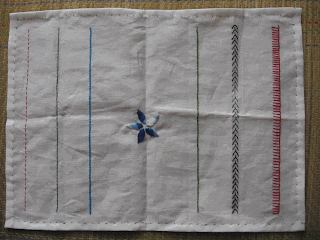Now that you have learnt to embroider some basic stitches, I would be glad to give you instructions on how to trace a simple design and transfer it on to a cloth. Here are the steps with pictures.
Materials Required for Tracing
1. Design/pattern
2. Tracing sheet
3. Pencil or an empty refill of a ball point pen
4. Carbon paper – Yellow or White colour
5. Fabric on which the design need to be transfered
Note: You can get carbon sheets from craft stores as well as stationery stores. Use yello carbon sheet for white cloth and yellow or white carbon sheet for other colour cloths. The blue or black carbon sheets stain the cloth badly if not used with knack.
Method
1. First and foremost, choose a design to embroider. You may search for designs on the Internet or get some basic design books from the craft stores. If you are good at drawing, you can draw your own design. But, I suggest that you make it simple the first time.
Here is the design I choose to embroider.
2. Place the tracing paper over the chosen design.
3. Hold the tracing paper firmly with your left hand. Using a pencil or a ball point pen, trace the design carefully on the tracing sheet.
4. Take the cloth to which you want to transfer the design. Decide where on the cloth you want to transfer the design. Place the carbon sheet with the white side up and the carbon side touching the cloth. Place the tracing paper with the design on the carbon sheet. Be very careful about the position of the design, carbon sheet and the cloth.
5. Now using a semi-sharp pencil or an empty refill of a ball point pen, firmly re-draw the design on the tracing paper. Take care to hold the cloth, carbon sheet and the tracing paper all in one place firmly with your left hand.
6. Once you have drawn the whole design, remove the tracing paper and the carbon carefully.
7. CONGRATS!!! Now you have got the design on the cloth, ready for the embroidery.


















